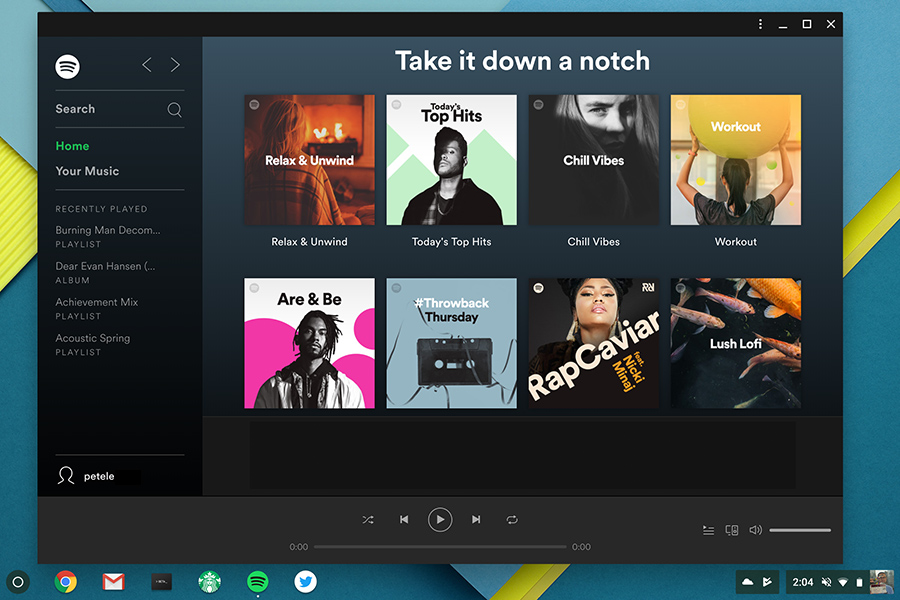Chrome 67 brings Progressive Web Apps to the desktop, adds experimental WebXR API for VR/AR content, and more [APK Download]
Almost a full month after the beta version was released, Chrome 67 is now available on Android and desktop platforms. This version includes the long-awaited desktop Progressive Web App support, as well as a new experimental tab switcher and several new APIs for developers.
Horizontal tab switcher
One major change in the new Android P Developer Preview is the horizontal Recents screen. It makes sense that Chrome's tab switcher would be updated to match the new look, and that's exactly what Google is doing. There's a new flag in Chrome 67 called #enable-horizontal-tab-switcher, which displays tabs horizontally instead of vertically.
Left: Regular tab switcher; Right: Horizontal tab switcher
The horizontal switcher in Chrome Canary looks much closer to Android P's Recents screen, so expect this to continue being worked on.
WebXR API
The first version of WebVR was announced in early 2016, and Chrome and Firefox quickly adopted the new standard. The goal was to bring virtual reality content to the web, with support for all headsets - from basic phone VR headsets to the high-end Oculus Rift and HTC Vive. WebVR continued to evolve for about a year, but in September of last year, the Chrome team said the WebVR API was being reworked to "support a wider variety of devices."
The updated version was announced in February as 'WebXR.' Unlike the older WebVR standard, WebXR supports both virtual reality and augmented reality. Developers would be able to make web apps that take advantage of ARCore on Android, and Apple's ARKit on iOS. Starting with Chrome 67, WebXR is now an 'origin trial,' meaning it's one step closer to a wide rollout.
360 Stereo Photo demo on Chrome 67 Beta
Once you enable the #webxr flag in chrome://flags, you can try out some VR demos. On Android, you can use any regular VR headset for the demos. On Windows, you can try them with an Oculus Rift, HTC Vive, or Windows Mixed Reality headset (thanks to Chrome's new SteamVR support).
Web Authentication API
What if passwords completely went away? That's the goal of the Web Authentication API, which is enabled by default in Chrome 67 (only on the desktop for now). The W3C describes it as "an API enabling the creation and use of strong, attested, scoped, public key-based credentials by web applications, for the purpose of strongly authenticating users."
Simply put, it allows using alternative methods of authentication for logging into websites. This includes PINs, fingerprints, Yubikey devices, Bluetooth devices, and even phones. If you're interested in the technical details, Mozilla has a great article about it on MDN.
At the moment, Firefox is the only other browser that supports the Web Authentication API, but the developers of Safari and Microsoft Edge are actively working on it. Once it becomes standard across all browsers, we might start to see major sites at least have an option to go password-less.
Progressive Web Apps on the desktop
Spotify PWA running on Chrome OS 67 (source: Google)
Progressive Web Apps are all the rage these days. Chrome on Android has supported them for some time, and you can even add them to Android's app drawer. Even though Chrome on the desktop supports most PWA features, like notifications and offline support, the desktop integration left a lot to be desired.
We already covered the improvements coming to Progressive Web Apps on Chrome OS, and those changes are landing in this version. Some of those improvements are coming to Chrome on other desktop platforms as well. Web apps can display an install banner (if certain requirements are met), and when opened from the desktop, the browser UI is hidden.
Other features
Like always, Chrome 67 includes changes for both users and developers. Here are some smaller features that ship with this update.
- AppCache from insecure contexts (e.g. HTTP) is no longer supported.
- Web pages can now listen for the back/forward buttons on mice (desktop only).
- The Generic Sensor API allows web apps to more easily access device sensors, like the accelerometer, gyroscope, orientation sensor, and motion sensor.
- Support for -webkit-box-flex-group, -webkit-box-lines, and percent values of -webkit-line-clamp has been removed.
APK Download
The APK is signed by Google and upgrades your existing app. The cryptographic signature guarantees that the file is safe to install and was not tampered with in any way. Rather than wait for Google to push this download to your devices, which can take days, download and install it just like any other APK.
Version: 67.0.3396.68
#Google #Android #Smartphones #OS #News @ndrdnws #ndrdnws #AndroidNews




